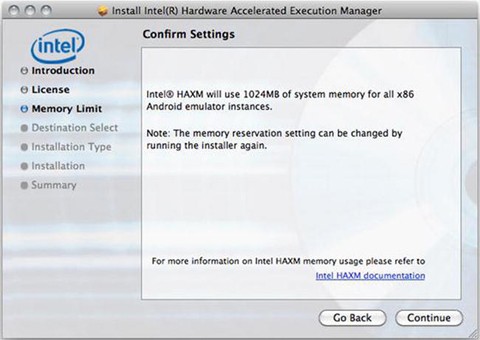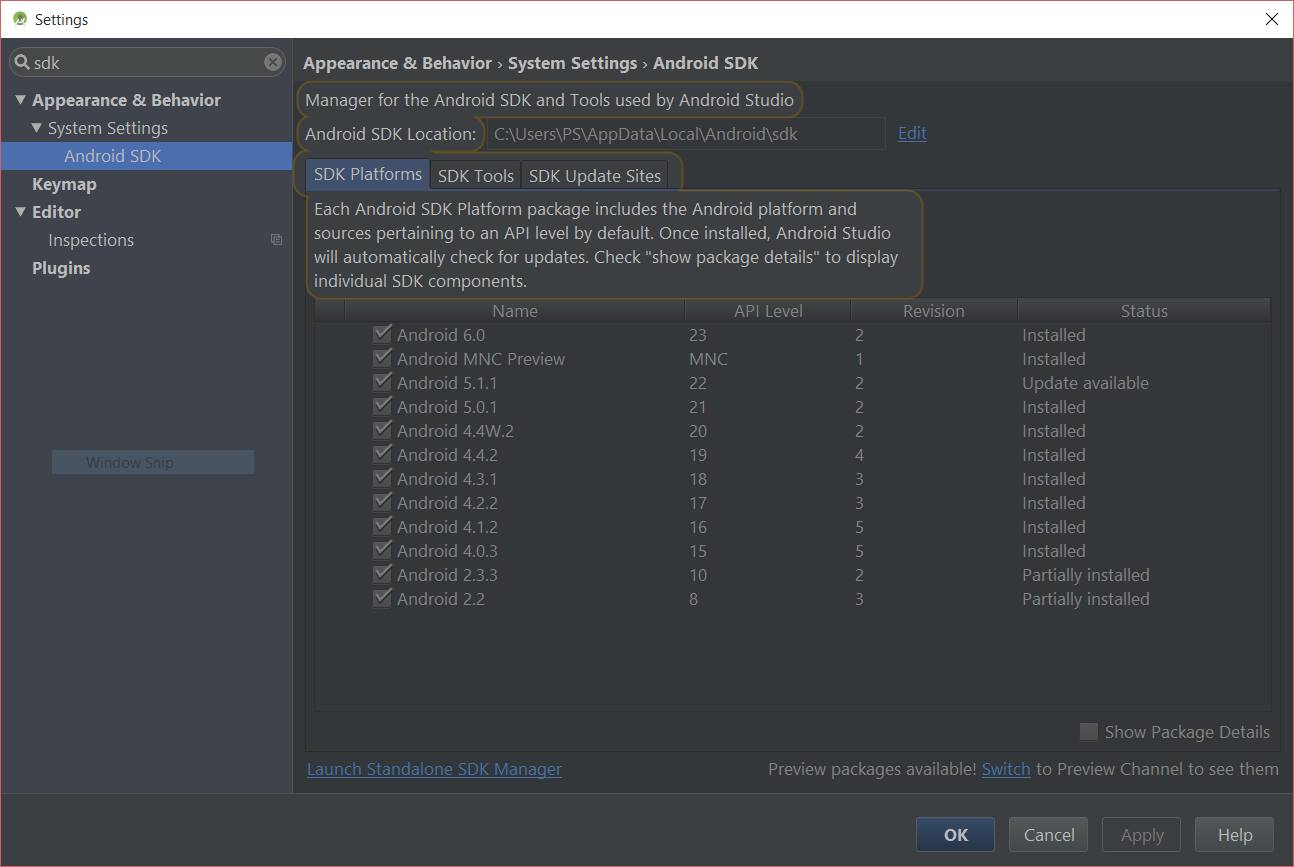How To Start Android Emulator Manager Mac
Setup Android Emulator on Mac OS X. The purpose of this section is to guide you to create in your development environment an Android emulator. Android emulators are managed through a UI called AVD Manager. AVD Manager has a nice interface when started from Android Studio. Start Android Studio app, then create a blank project. If you are trying to develop to Android, you probably will end up installing the Android Studio to get the Android SDK and the AVD Emulator working properly. But if you are using another code. If you are looking for an emulator to run Android apps on Mac, then this sounds to be good deal. With simply drag and drop actions you can get the app files on your Mac. Then the installation begins quickly after that.
- Android Studio Start Emulator
- Android Start Emulator Command Line
- How To Start Android Emulator Manager Mac Ios
- Open Android Emulator
Various things about Android are indeed very good to play. Both the application and the game presented on Google’s platform always offer a different experience in each use. Then, if you use a computer or laptop, can you still use it?
Answering the question above, yes it can be done. Because the Windows operating system has made it easier for users to present software that supports Android. Windows? So, where are we talking about Windows? Not.
We will discuss Android emulators for Mac OS X PCs. Well, what is the best emulator for running Android applications with the Mac OS X operating system?
Contents
- 1 Best 6 Android Emulators for Mac OS & PCs
- 1.6 6. Genymotion
Best 6 Android Emulators for Mac OS & PCs
1.Bluestacks App Player
Who doesn’t know this one emulator? Yes, Bluestacks App Player is the most mainstream software. Usually, you who use this software must use a Windows-based PC. Apparently, this cool software is also available for Mac OS X.
So, you want to play games on Android on Mac devices, you don’t need to worry anymore. Bluestacks itself is the only Android Emulator that is supported by investments from Intel, Samsung, Qualcomm, and AMD.
2.Xamarin Android Player
Besides Bluestacks, Xamarin Android Player is also the best Android Emulator that you can use on PCs based on Mac OS X. Your favorite applications and games on Android, you can operate through this emulator.
However, the installation process is a little long, you just need to follow the instructions provided just guys.
3.Andyroid
Andy OS is an operating system that provides features that are very very abundant on Mac, Windows and Cloud-based devices. This provides flexibility between desktop and mobile computing.
You will also be up-to-date with upgrades from the features provided by the latest Android operating system. Yes, Andyroid is another best emulator for you to install on a Mac OS X PC.
4.Droid4X
If you are a little lazy to look for applications in the emulator, now there is one best software for you. The name is Droid4X.
This Android emulator makes it easy for you to drag and drop files in the form of an application, and the installation process will start immediately.
Then, please continue your pleasure to play your favorite Android apps and games.
5.ARChon! Android Emulator
Do you want to run the application in the Chrome browser on your Mac OS X PC? Use ARChon! Android Emulator.



This best Android emulator will help you run your favorite Android applications and games on the Chrome browser. Wow, how nice is that? Already you’ve explored cyberspace, you can also play games again. Steady!
6.Genymotion
Genymotionis one of the best Android emulators you can choose for your use. Why should you choose Genymotion?
Because, this software is fast, easy to use, and is the most powerful Android emulator ever created.
In addition, if you like to make an Android application, you can test it using Genymotion.
Conclusion
Now, that’s the six best Android emulator choices that you can use as a reference for you to use. If not, just try one by one, to compare the greatness.
Later, if one of the emulators is your best choice, share your experience in the comments column below. Good luck!
Android emulators can be a bit slow and when I say slow, I mean REALLY slow. This article attempts to cover a two of the most prominent issues when using an Android emulator with Xamarin. Its speed and how buggy the debugging can be. If that makes sense. :/
So you're using Xamarin to build an app and all of a sudden, one day, out of the blue, like Xamarin just decided to hate you, it get's stuck on Starting emulator... or it just takes AGES to start debugging, chances are you're running your emulator with a virtual ARM CPU, yup... Slow.
Solving the slow AVD and buggy integration between Xamarin and AVD:
To solve the issues, you'll need to change your virtual device from an ARM CPU to an Intel Atom, to do this, click the icon in the toolbar that looks like a phone with a play button over it, like so:
This will open up the Android Virtual Device Manager and within it, you should have a list of virtual devices that Xamarin can use to debug Android apps within, we're going to want to change one of these to an Intel Atom CPU, as you can see below, I've already changed one of mine so you can see the difference within the AVD.
Note: You may notice that none of my virtual devices names contain spaces, this is because there was a known issue with the virtual names containing spaces and Xamarins ability to use them to debug so this might be worth a thought if you run into this issue.
Now you'll need to click one of the devices in the list and then click the Edit... button, this will allow you to change the device name and configuration. You should now have been presented with a new window that looks like this:
So if you wanted to change the name, now is the time to do it, just update the text within the AVD Name field.
You'll now need to choose the Intel CPU from the CPU/ABI dropdown, just click it and choose Intel Atom (x86), now you'll need to change the VM Heap to 256 and give your device more ram if required. I tend to allow 2048.
Note: When Use Host GPU is checked, you cannot also have Snapshot checked.
If you want to speed up rendering, make sure that the Use Host GPU checkbox is checked.
Now click OK and you'll be presented with another window with the heading Result of creating AVD, click OK on that too as this window is just informational.
Making sure the final bits are installed:
In order to correctly emulate an Intel Atom CPU, you'll need to install Intel HAXM, just scroll down on the page, click to download the zip, agree with the terms, wait for it to download, extract it and install leaving all the settings default.
Chances are the AVD will now work, but if you have Hyper V running, you'll need to turn that off so that the Intel Virtualisation can run correctly, simply open up CMD with administrative rights and run the following command and when it's done, reboot:
That's it, you're good to go and your Android Virtual devices should now run at least x10 faster and Xamarin should deploy apps to it with ease.
Xamarin won't launch your app?
Android Studio Start Emulator
Your app might crash on startup with the error 'android emulator shared runtime initialization error' despite the virtual device now running very quick. This can be caused by the change in CPU on the virtual device, put simply, Xamarin uses a shared mono runtime to run its apps in debug, this is installed the first time you debug a Xamarin app, however if the device CPU changes, the binaries are now incompatible.

To solve this issue, uninstall Mono Shared Runtime and Xamarin Android API support from the Apps section within Settings, then simply Clicking play within Visual Studio will re-install both of these and your app should boot up as expected without issue.
Android Start Emulator Command Line
Summary.
You can speed up Android Virtual Devices by swapping from an ARM CPU to an Intel Atom CPU.
A faster AVD will allow Xamarin to make requests of it in a timely fashion solving some issues.

Intel HAXM is required to emulate an Intel Atom CPU.
Mono runtime will need to be reinstalled.
How To Start Android Emulator Manager Mac Ios
By Luke Alderton
Published at 21 Jul 2016, 10:02 AM
Tags: Android,Xamarin
Comments
We're adding your comment.
Open Android Emulator
Please try again later.
